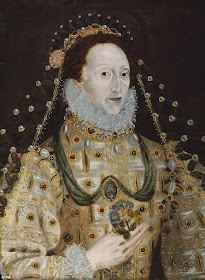Looking back at the past we judge what we see by what we know now. To the modern eye, the crowd scenes painted by William Powell Frith
are delightfully detailed and evocative of a bygone age, but they are anything
but controversial.
 |
| Self portrait of Frith in his 80s. |
However, to the Victorian eye, when Frith’s “new type”
of painting was first revealed it was lambasted as “a tissue of vulgarity” and “a
piece of vulgar Cockney business unworthy of being represented even in an
illustrated paper.” Ouch!
So what was it that caused such a volley of offence?
The scenes which the Victorian critics found so disturbing were those showing
ordinary people enjoying themselves. The critics disliked the paintings on so
many levels: they depicted the hoy-polloy, the pictures could be read like a
story, and many believed them in bad taste.
In short, the choice to not paint wealthy people
looking their best, but to mirror real life was nothing short of revolutionary –
and didn’t meet with instant approval.
Ramsgate Sands
Indeed the picture which triggered this reaction was
Frith’s “Ramsgate Sands”. Here he showed a lot of middle class Victorians
enjoying a day out on the beach complete with Punch and Judy Show, donkey
rides, children paddling, women reading newspapers, and a boy with a mouth organ.
 |
Life at the Seaside, Ramsgate Sands
by Frith |
The scene Frith recorded was a relatively new innovation,
the day trip – brought about by the new railway allowing ordinary people to
escape for a day to a pleasant location. But the big question was: Is ordinary
life worthy of art?
Fortunately for Frith, it seems Queen Victoria
approved (despite the critics). Perhaps because she remembered Ramsgate from
her childhood, she fell in love with the picture and bought it.
So a fashion began for “gazing” or recording the ever
more mobile antics of the ordinary Victorian person.
Derby Day
As a leader in his field, Frith decided to tackle a
crowd of epic proportions in his painting “Derby Day”. The race on the Epsom
Downs had become an unofficial public holiday and Frith was fascinated by the “kaleidoscopic
aspect of the crowd”. Aristocrats,
ordinary people, gypsies, pickpockets, prostitutes, tricksters, and politicians
all rubbed shoulders at this spectacular event and Frith was determined to
capture it. As the Illustrated London News described the event:
“[The upper classes] positively to hob and nob with those palpably of inferior to them in
station.”
Or as one French visitor put it,
“[Derby Day was] an
outlet for a year of repression.”
 |
| Derby Day |
Unlike Ramsgate Sands, this picture was a commission,
and Frith was encouraged to hire models for his work. His patron had extensive contacts
and reputedly asked Frith about the models:
“What is it to
be this time? Fair or dark, long nose or short, Roman or aquiline, tall figure
or small?”
The picture took 18 months to complete, but was an
instant success. When exhibited at the Royal Academy, the crowds had to be held
back behind an iron screen. Indeed, Queen Victoria and her husband, Albert,
visited. Both praised the work but whereas Victoria was effusive in her enthusiasm,
Albert was constructively critical and suggested ways to improve the painting!
The Railway Station
Frith strode forward with his next work which depicted
travellers at Paddington Station, London. On the right of the painting two
detectives arrest a pickpocket, the former based on two actual policemen of the
day who posed for Frith. For this painting Frith used his family (or one family…more
of this shortly) as models. The lady with a paisley shawl, seeing off her son,
is actually Frith’s wife Isabella.
 |
| The Railway Station |
Double Life
However, Frith was not all he seemed. A seemingly
devoted husband to Isabella and father to their twelve children, what his wife
didn’t know was that Frith kept a mistress.
Just a mile or so distant from the family home, Frith
had a duplicate family with his mistress Mary Alford, with whom he had seven
children. (It is believed Mary was the model for Frith’s painting, “The
Rejected Poet”.)
 |
| Frith's mistress was the model |
The story goes that for years Isabella was ignorant of
this arrangement. But one day she spotted her husband posting a letter – and the
game was up. How come?
Well the letter was a loving letter from her husband
saying how much he was enjoying himself on a short break by the sea. He was
rumbled. Society became aware of the double standards of the artist, and whilst
a blind eye was turned, his misdemeanours meant he was never officially
recognized by one of his biggest fans, Queen Victoria.
When eventually Isabella died, Frith went on to marry
Mary, but his lasting legacy was the abundance of paintings which laid open for
all to see, the wide and varied nature of Victorian life.























